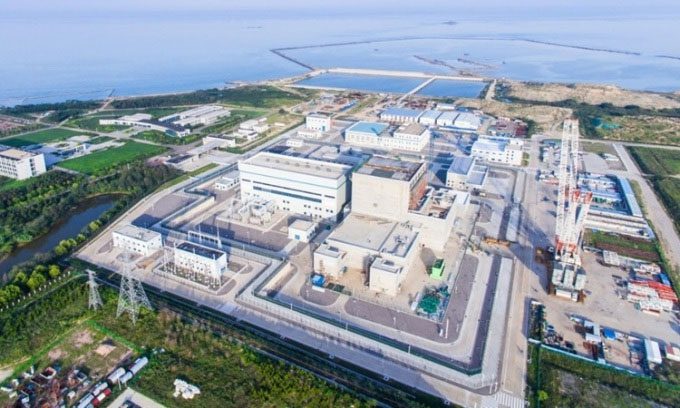Shidaowan Nuclear Power Plant, the world’s first operational fourth-generation reactor, begins commercial operation.
The High-Temperature Gas-cooled Reactor (HTGR) commenced operations following a continuous operational test lasting one week (168 hours), according to an announcement on December 6 by the China National Nuclear Corporation (CNNC). This fourth-generation nuclear reactor is designed to succeed the currently operational water-cooled reactors worldwide. The reactor at the Shidaowan plant in Shandong Province, eastern China, is part of a global effort to promote safer, more sustainable, and efficient nuclear power generation.

The HTGR reactor at Shidaowan power plant cooled by helium gas. (Photo: Weibo).
Instead of using water for cooling, the high-temperature reactor will be cooled by helium gas, providing a promising solution for developing more inland nuclear power plants as it does not require proximity to water sources. The high-temperature reactor can produce heat, electricity, and hydrogen, helping China and the world achieve carbon neutrality goals, according to Zhang Zuoyi, head of the Nuclear Technology and New Energy Institute at Tsinghua University and chief designer of the Shidaowan reactor project. CNNC, Tsinghua University, and Huaneng Group co-developed and operate the plant.
The plant began construction in 2012 and includes two high-temperature reactors with a capacity of 250 megawatts each and a steam turbine generator with an installed capacity of 200 megawatts, according to CNNC. 93.4% of the materials used in Shidaowan HTGR are sourced domestically. A key feature of the reactor design is its safety in the event of sudden malfunctions or external impacts, ensuring that the core will not melt down. The fourth-generation reactor aims to minimize environmental impacts, reduce nuclear waste burdens, the risk of meltdown, and the potential for nuclear proliferation, according to the Generation IV International Forum (GIF), an international organization promoting new nuclear energy technologies.
The fourth-generation nuclear reactor is designed to operate at higher temperatures than most reactors currently in operation worldwide, allowing for the production of both electricity and hydrogen. GIF identifies six types of nuclear technologies representing the fourth generation, with most member countries committed to developing at least one of these technologies. In addition to helium-cooled reactors like Shidaowan HTGR, there are also sodium-cooled fast reactors, molten salt reactors, and supercritical water reactors, which can convert nuclear waste into fuel and directly use water to push turbines instead of steam for electricity generation. Reactors like Shidaowan will produce hydrogen alongside electricity for the grid. The hydrogen generated from the reactor can be used as fuel as well as for various industrial applications.
While Shidaowan is the world’s first operational HTGR, other fourth-generation plants in China are also nearing completion. In southeastern Fujian Province, the sodium-cooled fast reactor pilot project Xiapu, managed by CNNC, is under construction and is expected to connect to the grid by 2025.
Other fourth-generation nuclear reactor projects are in the research and design phase in the United States, Japan, and Canada but have not yet begun construction, according to the International Energy Agency. China is rapidly increasing its nuclear power capacity at the fastest rate globally. However, as of this year, nuclear power still accounts for only 5% of China’s electricity generation.





















































